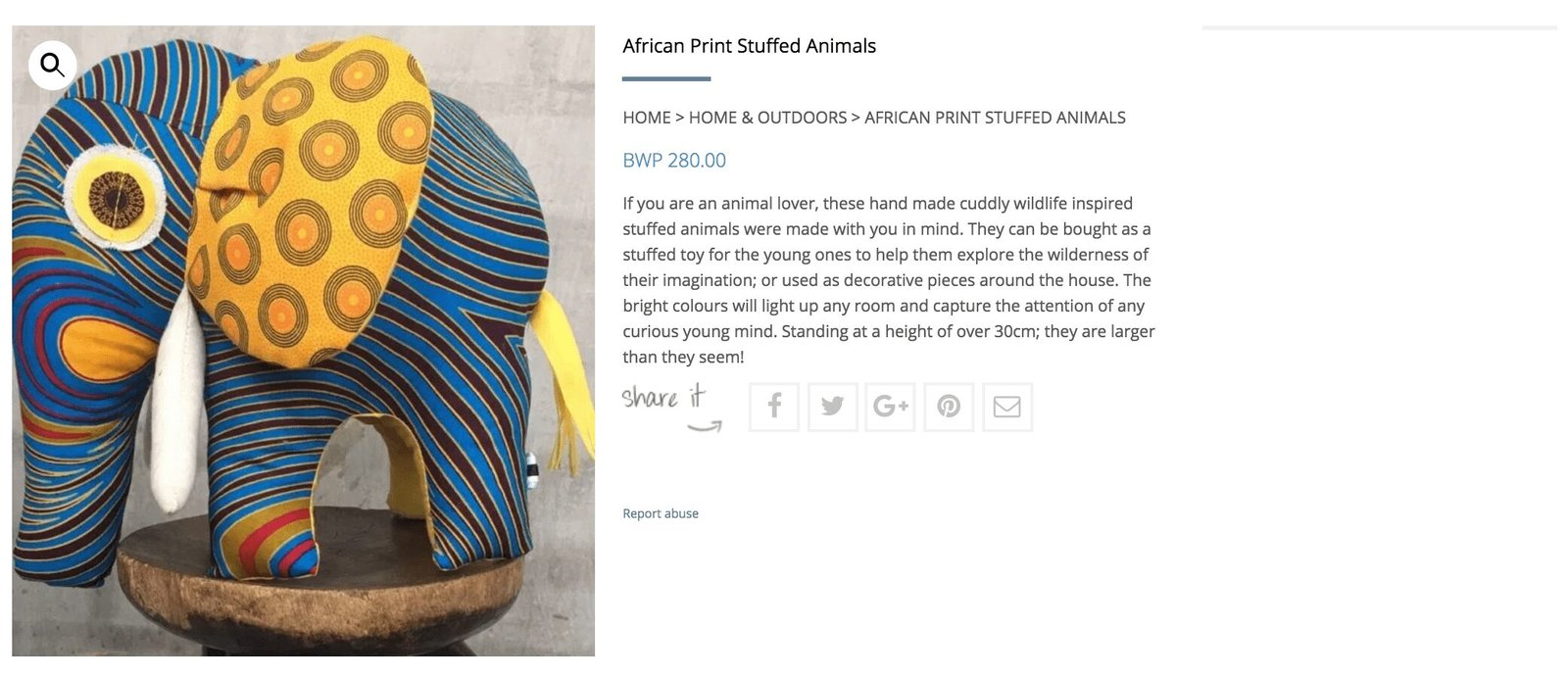WooCommerce is used by store owners from all over the world – store owners such as Tshegofatso Tlhong. Tshego is a young woman from Botswana with a strong entrepreneurial spirit, and is also the managing director and founder of Ziigie.com.
We sat down with Tshego to find out more about how WooCommerce is helping her to ship ideas, along with the unique challenges she faces as an eCommerce entrepreneur in southern Africa.

Tell us about Ziigie.com. Why did you start the business? What are you selling?
Ziigie.com is a marketplace for handcrafted products; currently, all products are made in Botswana, with the aim of spreading reach to the rest of the Southern African region in the future. What is being sold ranges from handmade artisan chocolate bars to hair care products to condiments like jam. We even have handbags, books and music for sale.
When I started Ziigie.com, I wanted to specifically help artisanal manufacturers to sell their products to a wider market. What I would find in Botswana is that many people are making great things, but they have a very limited market-reach. Many potential customers did not even know these artisans existed or what they had to offer. The aim was to create a space for those craftspeople to not only get in touch with a wider market, but also sell to that audience.
You describe it as being a quite new approach in Botswana. What was the biggest challenge that you faced?
The first big challenge was finding vendors. There is very little trust in the digital world here, so getting people to offer their produce on our marketplace was difficult. It was a chicken-or-egg type of situation: the vendors wanted to see it functioning first, but we needed them to have it functioning in the first place.
Luckily, a group of people bought into the vision and they were some of our first vendors. As soon as that happened it became a lot easier to find more vendors. Just having a few sellers available put us on the fast-track towards getting the 30 vendors hosted by us today.

Was it clear from the beginning that your vision was going to be accomplished through eCommerce? Or did you toy with the idea of having a physical store first?
I never wanted to open a physical store. From the get-go we wanted to start an online store, mainly because it’s easy to scale and a whole lot cheaper to set up than a brick-and-mortar store.
Added to that, the reach is a lot bigger. Our aim was to expand the buyer pool past the vendor’s locale, and starting a physical store would have maybe moved that locale a little bit, but it wouldn’t have come close to us realising the goal of enlarging the market exponentially.
And do you see the mentality towards eCommerce changing?
We do see that changing a bit. Few stores in Botswana already offer online shopping, so we’re expecting that this might still take a while, but as we interact with our customers, we see that customers are embracing eCommerce. They are starting to warm up to buying online.
When it comes to changing that mindset, there are two major scepticisms that we have to overcome: payments and delivery. First of all, our local customers do not trust paying with credit cards. “What are you going to do with my credit card details?” Secondly, the trust that, after you pay, you will get that package delivered, needs to be built as well.
In starting our eCommerce store, we’re noticing that we are investing a lot of time and energy in educating people. We have to explain what the process will look like and how long each of the steps of the process will take. We also can point them to a detailed privacy policy. Furthermore, we’ve seen that adding a physical address to our store builds confidence. In the event that something does go wrong, our customers still know how to find us.
Adding a physical address to our store builds confidence. In the event that something does go wrong, our customers still know how to find us.
What we started doing that really got the traffic moving was having more interactions with people. We handed out coupons to influencers to get the word out as well. With word-of-mouth marketing, it was a lot easier to convince our sceptics. They had seen friends or family shop with us and were more willing to try it out themselves. Also, being visible in physical spaces helped us. We went to crafts markets, for example, and took time to speak both potential vendors and customers. Being proactive made our brand and our team more personable, and that took away some boundaries. They weren’t just dealing with computer screens anymore.
At some point, you decided to start using WooCommerce for your store. Why did you choose WooCommerce?
I chose Woo because it’s easy. I don’t have a coding or programming background. Although I had someone helping me with that side as well, I wanted a system that was easy for me to understand. You don’t want to be punching in the dark when it comes to the whole process. When it comes to handling orders and managing products, I wanted to be able to understand everything so that I wouldn’t be reliant on others. If I log in, I want to be able to at least do the basic things myself.
We also liked how easy it was to get data out of Woo. We try to make our business decisions data-driven. We have quite a few customers, and the data helps us to segment and target specific users. WooCommerce is also very user-friendly for doing this.
Conversely, what did you find was the most challenging thing in working with WooCommerce?
I don’t think it was something related to Woo in particular, but our site was very slow when we started it. It was difficult for us to understand why it was so slow. Luckily, at an eCommerce conference in Cape Town, we were able to chat to some developers on the WooCommerce team who took a look at our website and gave us some amazing tips for speeding up performance.
I can now happily say that our site is a lot faster these days than it was before that meeting. We got some amazing support from the Woo team.
Which plugins help to optimize your WooCommerce store?
I really love the currency converter widget. We haven’t deployed our international site yet, but I can already see how amazing it’ll be to simply display the prices in local currencies. Also, in chatting to the Woo team, we found out about this extension and, as we’re approaching our international shipping launch, we absolutely wanted this extension to power our store.
If you could give one piece of advice to store owners in the Global South, what would it be?
One of the reasons eCommerce is not big in many countries in the Global South is due to the lack of digital trust. My biggest advice would be to focus on education. Setting up an online store is quite easy, but it has its unique set of challenges that are mostly of a non-technical nature.
Also, don’t let these challenges put you down. Just have fun with eCommerce as well. I’ve learned so much in our time with Ziigie.com. Working in a new industry, at least for our country, has required me to be flexible, but it’s also quite exciting to be at the forefront of exploring new markets. Be the leader to develop your country’s eCommerce industry!
Having a team of inspiring people to work with helps tremendously with this. When I started Ziigie.com, I was by myself and it was a slow and tedious process. It’s more difficult to see other perspectives. Once I built a good team with different opinions and viewpoints, it became a lot more vibrant. Entrepreneurship is a marathon and sometimes you get tired. In those situations, having others around is encouraging in those more difficult times.
Entrepreneurship is a marathon and sometimes you get tired. In those situations, having others around is encouraging in those more difficult times.
What were some of the ways that you dealt with the unique technical challenges of your target market? We’ve heard mobile money is big in Africa.
When it comes to payments, we have to be creative. We’re accepting quite a few different options: direct deposit for people who don’t want to give their credit card details, PayPal for those who don’t mind, and also mobile money. The majority of people in Botswana use the latter.
We are about to move away from PayPal towards MyGate, because it supports our local currency. The cost for processing payments here is much higher than in many Western countries, so we’re always looking for better solutions.

Our mobile approach is still a manual process: the customers send us the mobile money and we confirm the order by hand. However, we’re looking into integrating with Orange Money so that we can automate this process as well.
Ziigie.com is a marketplace. What is your favorite product on it?
I’m mortified that I have to choose one. Let me give you my top three.The heel balm would be one of them. My partner used to have terribly cracked heels and now they are gone, so every time that jar runs out, I’m on my website ordering another one.

I also love the craft jams of Maungo. They have one called “Old Faithful”, which has a marula base with chia seeds and white wine in it.
Finally, I love our stuffed animals – we sell giraffes and hippos. They are a great gift for kids, but also serve as nice decorative items. They are a great conversation starter.

Finally, what does the name Ziigie mean, and why did you choose it for your store?
It has no meaning! I was playing with my son, goofing around and making weird noises and when this noise was made, I thought: “Wait a minute, that sounds quite cool for a business name.” Now, whenever he sees something Ziigie.com related, his face lights up and he calls it “my Ziigie.”
—-
Thanks a lot for the interview and all the best!

